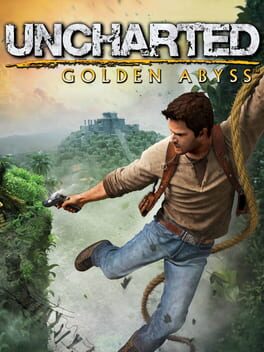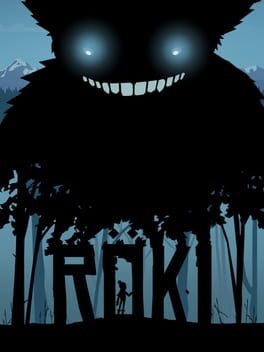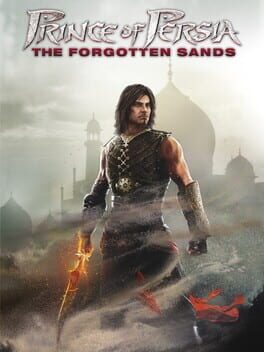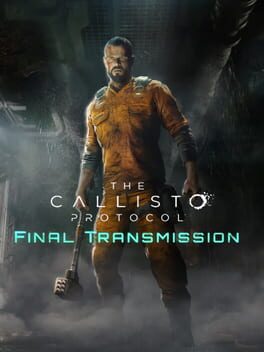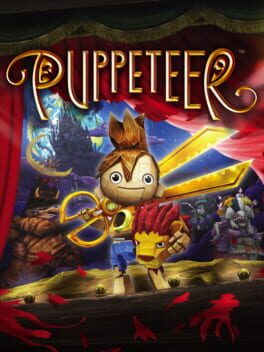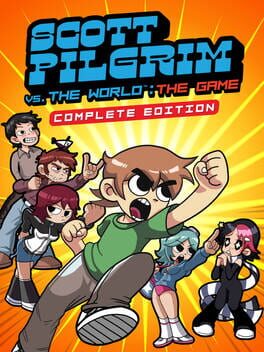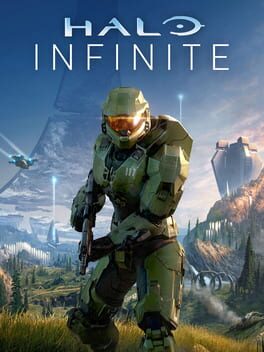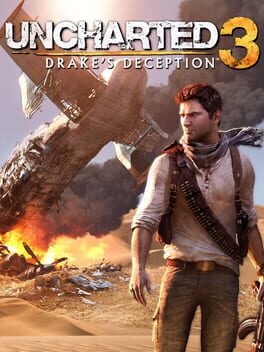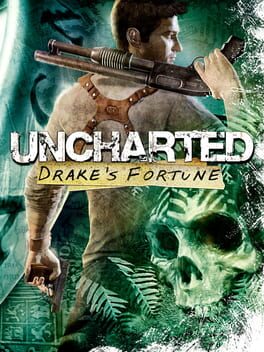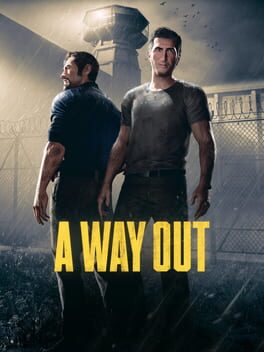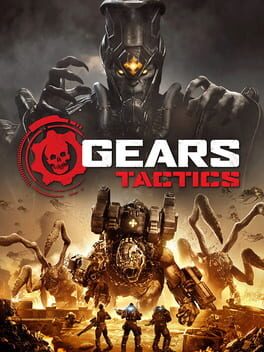Granny7989
It’s amazing that a game like Uncharted was squeezed down to fit the scope of a PlayStation Vita, while retaining the familiar Uncharted gameplay that you would get on a PlayStation 3. The limited power of the Vita means that you will never get anywhere close to the level of bombastic set-pieces that you’d come to expect from an Uncharted 2 or Uncharted 3, so The Golden Abyss feels would be more akin to an Uncharted 1.5.
The Uncharted formula is all here: find an artifact, chase after some warlord who took artifact, hide behind cover and shoot a bunch of dudes, exclaim “woah!” a lot, realise that the artifact is nothing compared to the power of friendship, the end. The gameplay from the PS3 game translates almost without compromise onto the Vita’s controls. Being able to use the gyro-controls to fine tune the aim of a sniper rifle is a welcome feature to have.
Unfortunately, I found the minigames that use the Vita’s touchscreen and accelerometer to be awkwardly shoehorned in. Crossing over a narrow bridge? Better stop and have the player do a tilting minigame by titling the actual console. Want to throw grenades? Use your finger to drag the grenade to where you want to throw it. Found a torn-up map in the level? Use the touch screen drag and rotate the pieces to put map back together. Want to row the boat? Drag your finger across the screen to row. I’m not against Sony wanting to use the Vita’s capabilities to the fullest, but either go all in with the touch controls (like Nintendo did with the Zelda games on the DS) or go for a similar, no-nonsense game that plays like the PS3 counterparts.
Overall, the game is fine. The Golden Abyss shows off the impressive graphical capabilities of the PlayStation Vita handheld, so it's worth checking out if you own a PlayStation Vita. However, the awkwardly implemented minigames and the weak story means that I wouldn’t say it's worth hunting down a Vita for.
The Uncharted formula is all here: find an artifact, chase after some warlord who took artifact, hide behind cover and shoot a bunch of dudes, exclaim “woah!” a lot, realise that the artifact is nothing compared to the power of friendship, the end. The gameplay from the PS3 game translates almost without compromise onto the Vita’s controls. Being able to use the gyro-controls to fine tune the aim of a sniper rifle is a welcome feature to have.
Unfortunately, I found the minigames that use the Vita’s touchscreen and accelerometer to be awkwardly shoehorned in. Crossing over a narrow bridge? Better stop and have the player do a tilting minigame by titling the actual console. Want to throw grenades? Use your finger to drag the grenade to where you want to throw it. Found a torn-up map in the level? Use the touch screen drag and rotate the pieces to put map back together. Want to row the boat? Drag your finger across the screen to row. I’m not against Sony wanting to use the Vita’s capabilities to the fullest, but either go all in with the touch controls (like Nintendo did with the Zelda games on the DS) or go for a similar, no-nonsense game that plays like the PS3 counterparts.
Overall, the game is fine. The Golden Abyss shows off the impressive graphical capabilities of the PlayStation Vita handheld, so it's worth checking out if you own a PlayStation Vita. However, the awkwardly implemented minigames and the weak story means that I wouldn’t say it's worth hunting down a Vita for.
2020
I enjoyed the plot elements and the puzzles in the middle sections of the game, but I ended up really souring towards the game
I did not connect with the characters, so I found myself not investing myself in the story. This was an issue when it came to the last 10 minutes of playtime, where the game dumped a load of story at the end. I was smashing the enter key on my keyboard as fast as possible just so I can get through it as quick as I could.
I ended up having to use a walkthrough for some of the larger areas where you needed to puzzle solve because some parts of the game really dragged for me. It also didn't help that I got stuck on how to proceed a few times, as the solution would sometimes be obstructed by parts of the environment, because I didn't move my character in a specific area to change the camera angle.
While I got this game for less than a fiver on a GOG sale, I can't say that it was money well spent.
I did not connect with the characters, so I found myself not investing myself in the story. This was an issue when it came to the last 10 minutes of playtime, where the game dumped a load of story at the end. I was smashing the enter key on my keyboard as fast as possible just so I can get through it as quick as I could.
I ended up having to use a walkthrough for some of the larger areas where you needed to puzzle solve because some parts of the game really dragged for me. It also didn't help that I got stuck on how to proceed a few times, as the solution would sometimes be obstructed by parts of the environment, because I didn't move my character in a specific area to change the camera angle.
While I got this game for less than a fiver on a GOG sale, I can't say that it was money well spent.
A nice mechanical throwback to the classic Sands of Time trilogy. I enjoyed the game, but I found the game unremarkable overall. You get the ability to freeze water which allows the level designers to come up with some fun platforming challenges. However, the movement controls feel clunky, and I found myself performing runs/jumps that I did not intend to do (often leading to leaps of death). Combat has been simplified, so it's serviceable but lacks depth.
Overall, a fine and enjoyable game but I can see why this entry has been forgotten by many.
Overall, a fine and enjoyable game but I can see why this entry has been forgotten by many.
While I thought the base game was fine, I did not have a good time with this DLC.
The game gives the player a new melee weapon the use in combat, which has an area of effect attack that allows you to stun and knock-back enemies. However, there were many times when I used the AOE attack and it would not be registered, letting the enemy to continue with their attack and cause damage. Coupled that issue with the new “biobot” enemies, that do a lot of damage, made some combat encounters infuriating; it really highlighted the major weaknesses of the combat system.
The DLC had a few bugs crop up during my playthrough. Aside from the AOE hammer attack not being registered mentioned above, I had an issue where the game wouldn’t start properly, as I was stuck staring at a grey screen. The game also hard crashed on me too, which wasn’t that big of a deal because autosave is fairly frequent. I got the feeling that the DLC didn’t get time to be polished up.
I bought this DLC on a PlayStation Store sale and I don’t think it was worth it considering the lack of enjoyment I got from it. It doesn’t add anything interesting to the story; if anything, the revelation at the end left me rather annoyed.
The game gives the player a new melee weapon the use in combat, which has an area of effect attack that allows you to stun and knock-back enemies. However, there were many times when I used the AOE attack and it would not be registered, letting the enemy to continue with their attack and cause damage. Coupled that issue with the new “biobot” enemies, that do a lot of damage, made some combat encounters infuriating; it really highlighted the major weaknesses of the combat system.
The DLC had a few bugs crop up during my playthrough. Aside from the AOE hammer attack not being registered mentioned above, I had an issue where the game wouldn’t start properly, as I was stuck staring at a grey screen. The game also hard crashed on me too, which wasn’t that big of a deal because autosave is fairly frequent. I got the feeling that the DLC didn’t get time to be polished up.
I bought this DLC on a PlayStation Store sale and I don’t think it was worth it considering the lack of enjoyment I got from it. It doesn’t add anything interesting to the story; if anything, the revelation at the end left me rather annoyed.
2013
It took me three attempts to beat this game; I kept bouncing off the game as it never clicked with me. I think the reason for this is because the game wouldn't shut up and let me play. Characters are frequently talking and bantering with each other as I progressed through the level, which frequently got interrupted as I progressed through the levels. Some of the cutscenes feel like they go one for some long minutes too. I get the game wants to give context with what’s going on/what’s happening, but I think brevity would have allowed me to better enjoy the first few opening levels.
However, I did really warm up to the game and found myself having a good time. Once I progressed far enough to have unlocked all the mechanics, I had a fun time making my way through the different platforming challenges. I like the concept of collecting different puppet heads that unlock secrets throughout the level, but I wish they did more with it; it would have been cool if there was a selection of heads that mixes up the way that you play, like a power-up mechanic.
Overall, I enjoyed my time with Puppeteer and I’m glad that I’ve finally done a full playthrough of it. I can see myself revisiting the game to unlock the remaining trophies I have yet to earn. Scanning through the reviews on Backloggd shows there's a lot of people who really liked this game, so it’s a shame that the game never got a port or remaster for the new PlayStation consoles.
However, I did really warm up to the game and found myself having a good time. Once I progressed far enough to have unlocked all the mechanics, I had a fun time making my way through the different platforming challenges. I like the concept of collecting different puppet heads that unlock secrets throughout the level, but I wish they did more with it; it would have been cool if there was a selection of heads that mixes up the way that you play, like a power-up mechanic.
Overall, I enjoyed my time with Puppeteer and I’m glad that I’ve finally done a full playthrough of it. I can see myself revisiting the game to unlock the remaining trophies I have yet to earn. Scanning through the reviews on Backloggd shows there's a lot of people who really liked this game, so it’s a shame that the game never got a port or remaster for the new PlayStation consoles.
Scott Pilgrim vs. The World is a game that's carried by its looks and nothing else.
While the gameplay is enjoyable in the early levels, especially in co-op, the difficulty really ramps up fast. The game got so difficult that my co-op partner and I eventually abandoned our playthrough because we weren't having a good time anymore.
The game is pretty buggy too, some of which that led to the game crashing to the PS5 home screen, resulting in my co-op partner losing progress they had made with their character on more than one occasion.
My overall feelings towards the game are pretty negative. If you're looking for a brawler-style video game to play with friends, I would pick Castle Crashers Remastered over this any day.
While the gameplay is enjoyable in the early levels, especially in co-op, the difficulty really ramps up fast. The game got so difficult that my co-op partner and I eventually abandoned our playthrough because we weren't having a good time anymore.
The game is pretty buggy too, some of which that led to the game crashing to the PS5 home screen, resulting in my co-op partner losing progress they had made with their character on more than one occasion.
My overall feelings towards the game are pretty negative. If you're looking for a brawler-style video game to play with friends, I would pick Castle Crashers Remastered over this any day.
2021
Co-op online was a mixed bag. While I had fun messing about in the open world with a friend, as well as coming up with different tactics to defeat the tougher bosses, the linear levels didn't feel like they were designed with co-op in mind. Firing your weapon and the hit being registered by an enemy had a noticeable delay. The most frequent bug was the game not registering the equipment that I wanted to switch to, which always seemed to happen in the middle of a firefight. The only resolution was to ask my friend to kill me to death, which he happily obliged. Thanks, Aaron.
I played The Callisto Protocol with a lot of quality-of-life patches applied to the game. While I had an okay time with the game, it’s not often I play a game that make me feel a lot of potential had been squandered.
The visual presentation seems to be where most of the time and effort has gone into the game. The graphical fidelity and animation are some of the best that I have seen for the 9th generation of games. The detail of the facial features and animation is excellent, and I believe The Callisto Protocol has set a new bar of technical quality that other games should aspire for.
I did like the game went for a melee brawler combat system rather than opting for the over-the-shoulder shooter that has been done so many times now. I know some people had issues with the combat system, but I found it worked fine for the most part, most likely due to the patches that were released for the game. I liked that you had to use the left stick to dodge enemy attack and wait for an opening to bonk them on the head with the stand baton.
Sadly, the gameplay loop doesn’t evolve beyond hitting zombies with your baton and occasionally shooting them with your sidearm. Most zombies you’ll come across are human like, so combat encounters will work the same regardless of what you are fighting.
The art design feels uninspired. You’ll navigate through medical wings, prison cells, hydroponics centres, and mining towns. However, with everything being so dark and the walls being covered in metal and pipework, the levels rarely feel distinct from one another.
Levels are linear in their design. Being linear isn’t really the problem. The issue I had that, while the levels themselves can be very detailed, there was very little reason to explore the immediate environment that you were in. There’s rarely any loot that is hidden away in a nook somewhere. You do occasionally come across optional route that will lead you to a loot chest but it’s never clear if the path you’re on is the main path or the optional one.
The story is nothing to write home about. You’ll probably guess where the story is going after the first hour of playing. You’ll collect audio logs to get more backstory on what’s going on but even they are not worth listening to. It’s not like the original Dead Space or System Shock 2 where you’re piecing together the story of the events that happened have occurred before. The audio logs could be completely omitted from the game and the very little would have been lost from the removal.
My review probably gives the impression that I had a terrible time with the game but that’s not the case; the game is fine, but it should have been a solid first entry to a new series in the action-horror genre. It is a difficult game for me to recommend to others to play, at least as a full price game. The takes around 10 hours to complete, so if you see it bundled as part of PlayStation Plus or Xbox Game Pass, or you see it going cheap on a sale, I think it’s worth giving it a go.
The visual presentation seems to be where most of the time and effort has gone into the game. The graphical fidelity and animation are some of the best that I have seen for the 9th generation of games. The detail of the facial features and animation is excellent, and I believe The Callisto Protocol has set a new bar of technical quality that other games should aspire for.
I did like the game went for a melee brawler combat system rather than opting for the over-the-shoulder shooter that has been done so many times now. I know some people had issues with the combat system, but I found it worked fine for the most part, most likely due to the patches that were released for the game. I liked that you had to use the left stick to dodge enemy attack and wait for an opening to bonk them on the head with the stand baton.
Sadly, the gameplay loop doesn’t evolve beyond hitting zombies with your baton and occasionally shooting them with your sidearm. Most zombies you’ll come across are human like, so combat encounters will work the same regardless of what you are fighting.
The art design feels uninspired. You’ll navigate through medical wings, prison cells, hydroponics centres, and mining towns. However, with everything being so dark and the walls being covered in metal and pipework, the levels rarely feel distinct from one another.
Levels are linear in their design. Being linear isn’t really the problem. The issue I had that, while the levels themselves can be very detailed, there was very little reason to explore the immediate environment that you were in. There’s rarely any loot that is hidden away in a nook somewhere. You do occasionally come across optional route that will lead you to a loot chest but it’s never clear if the path you’re on is the main path or the optional one.
The story is nothing to write home about. You’ll probably guess where the story is going after the first hour of playing. You’ll collect audio logs to get more backstory on what’s going on but even they are not worth listening to. It’s not like the original Dead Space or System Shock 2 where you’re piecing together the story of the events that happened have occurred before. The audio logs could be completely omitted from the game and the very little would have been lost from the removal.
My review probably gives the impression that I had a terrible time with the game but that’s not the case; the game is fine, but it should have been a solid first entry to a new series in the action-horror genre. It is a difficult game for me to recommend to others to play, at least as a full price game. The takes around 10 hours to complete, so if you see it bundled as part of PlayStation Plus or Xbox Game Pass, or you see it going cheap on a sale, I think it’s worth giving it a go.
Uncharted 3: Drake’s Deception has the difficulty of following up Uncharted 2: Among Thieves that I had, to my own surprise, a lot of fun with. Sadly, Uncharted 3 doesn’t reach the same levels of quality of Uncharted 2.
The levels, while diverse with the different locations they take place in, didn’t feel as fun to roam around or fight in. For every Chateau level, that gave me the feeling of a classic Uncharted level, there’s a level like Syria where it fails to leave much of an impression on me.
That’s not to stay that effort hasn’t been put into the design of the levels. It’s clear that Naughty Dog are consciously thinking about how they can mix up the levels to keep things from getting boring. One level has gunfights take place in a burning building that limits what cover you can use, as any cover that’s on fire is unusable. Another level has you trying to outrun rising water in a capsized yacht that makes you disorientated as your try to figure out where to go to escape.
I was surprised how short the level that featured the plane was. For a set-piece that was shown regularly in the marketing, I was expecting something on a similar scale to the chapters that featured the train in Uncharted 2. However, the entire plane set-piece only lasts for a few minutes. It left me feeling underwhelmed.
The story comes across as disjointed and all over the place. You’ll have moments where Drake and the gang will witness and acknowledge that the villain Talbot seems to be able to appear and disappear into thin air. They’ll even comment that Talbot was fatally shot but appeared minutes later without injury. Nothing is revealed in the story to explain these occurrences.
Even the subtitle of the game “Drake’s Deception” doesn’t really play much into the story as a theme. I got the impression that Uncharted 3 will provide a character study of Nathan Drake. There’s a couple of moments in the story where characters will question Drake on whether it’s worth continuing the pursuit of Sir Francis Drake’s secret, but then it’s dropped and never brought up again.
The gameplay is the standard over-the-shoulder shooter affair that you’ll be familiar with if you played the previous games. The newest addition is the dynamic melee combat. Putting it simply, Nathan Drake will automatically grab items in the environment to attack enemies with for extra damage. Unfortunately, you don’t have much control over what or when Drake will pick up an item to fight with. You have to hope that Drake and the enemy are standing in the right place for Drake to understand that you want him to use the big, giant wrench to slap the enemy with.
It’s likely that my issues with Uncharted 3 is down to Naughty Dog putting a lot of their focus into the development of The Last of Us. There are a few elements of what made Uncharted 2 a favourite of mine in this game, but there isn’t enough to make it standout. The story feels like it’s still in the drafting phase. Levels lack polish. Even the fun side characters are underutilised throughout the story. In conclusion, Uncharted 3: Drake’s Deception is an entertaining game, but I think many will find it forgettable compared to the other games in the series.
The levels, while diverse with the different locations they take place in, didn’t feel as fun to roam around or fight in. For every Chateau level, that gave me the feeling of a classic Uncharted level, there’s a level like Syria where it fails to leave much of an impression on me.
That’s not to stay that effort hasn’t been put into the design of the levels. It’s clear that Naughty Dog are consciously thinking about how they can mix up the levels to keep things from getting boring. One level has gunfights take place in a burning building that limits what cover you can use, as any cover that’s on fire is unusable. Another level has you trying to outrun rising water in a capsized yacht that makes you disorientated as your try to figure out where to go to escape.
I was surprised how short the level that featured the plane was. For a set-piece that was shown regularly in the marketing, I was expecting something on a similar scale to the chapters that featured the train in Uncharted 2. However, the entire plane set-piece only lasts for a few minutes. It left me feeling underwhelmed.
The story comes across as disjointed and all over the place. You’ll have moments where Drake and the gang will witness and acknowledge that the villain Talbot seems to be able to appear and disappear into thin air. They’ll even comment that Talbot was fatally shot but appeared minutes later without injury. Nothing is revealed in the story to explain these occurrences.
Even the subtitle of the game “Drake’s Deception” doesn’t really play much into the story as a theme. I got the impression that Uncharted 3 will provide a character study of Nathan Drake. There’s a couple of moments in the story where characters will question Drake on whether it’s worth continuing the pursuit of Sir Francis Drake’s secret, but then it’s dropped and never brought up again.
The gameplay is the standard over-the-shoulder shooter affair that you’ll be familiar with if you played the previous games. The newest addition is the dynamic melee combat. Putting it simply, Nathan Drake will automatically grab items in the environment to attack enemies with for extra damage. Unfortunately, you don’t have much control over what or when Drake will pick up an item to fight with. You have to hope that Drake and the enemy are standing in the right place for Drake to understand that you want him to use the big, giant wrench to slap the enemy with.
It’s likely that my issues with Uncharted 3 is down to Naughty Dog putting a lot of their focus into the development of The Last of Us. There are a few elements of what made Uncharted 2 a favourite of mine in this game, but there isn’t enough to make it standout. The story feels like it’s still in the drafting phase. Levels lack polish. Even the fun side characters are underutilised throughout the story. In conclusion, Uncharted 3: Drake’s Deception is an entertaining game, but I think many will find it forgettable compared to the other games in the series.
2013
I couldn’t help but have a good time with Dead Space 3. I understood the criticism that people had towards the game’s greater focus on third person shooting, undercutting atmosphere of dread present in the previous games. However, once I got to the Terra Nova and I was allowed to go outside and explore nearby different shipwrecks and fight off monsters that lurked within them. It felt like a Dead Space game despite its problems. I was having fun.
Then I got to the second half of the game. When I landed on Tau Volantis and my enjoyment turned into frustration. While it was nice to have a drastic change of setting, it felt that I was exploring the same two environments (ice planet and dank warehouse) over and over. The story’s pace really slows to a crawl as support characters will squawk in your ear about finding the source of a signal(?), but you’ll go from one combat arena to the next with barely any progress made to the plot.
Speaking of the story, I had no idea what was really going on in the plot. We start the game with Isaac Clarke being on the run/hiding because while he’s being hunted by the villain because…it’s never really made clear. It felt that I came into the story already half way through. The love triangle between Isaac, Ellie, and Norton was out of place and uninteresting. Death of support characters had little impact because you don’t spend much time with them. It feels that the story was simply there to serve the overblown action set pieces so that Isaac can be thrown around like a ragdoll, as if he were a space-Nathan Drake.
Also, it turns out that moon was the big bad guy of the game? I’m sorry but flippin’ WHAT?!
Combat is frustrating. Gone are the moments of tension as you navigate tightly spaced environments, as you try to anticipate where the next enemy attack will come from. Instead, Dead Space 3 has obviously telegraphed ambush points where the necromorphs will burst out from and rush you in swarms. It’s not fun.
Dead Space 3 is not a bad game but it’s certainly an unremarkable one. The elements that made the previous Dead Space games stand-out are not here. It’s obvious that EA took cues from other popular third person action games, like Gears of War and Uncharted, to make it as broad appealing as possible. Ironically, this has made the game difficult to recommend without a heavy discount applied. If the game was shorter, I may have bumped up the rather to another half star.
Then I got to the second half of the game. When I landed on Tau Volantis and my enjoyment turned into frustration. While it was nice to have a drastic change of setting, it felt that I was exploring the same two environments (ice planet and dank warehouse) over and over. The story’s pace really slows to a crawl as support characters will squawk in your ear about finding the source of a signal(?), but you’ll go from one combat arena to the next with barely any progress made to the plot.
Speaking of the story, I had no idea what was really going on in the plot. We start the game with Isaac Clarke being on the run/hiding because while he’s being hunted by the villain because…it’s never really made clear. It felt that I came into the story already half way through. The love triangle between Isaac, Ellie, and Norton was out of place and uninteresting. Death of support characters had little impact because you don’t spend much time with them. It feels that the story was simply there to serve the overblown action set pieces so that Isaac can be thrown around like a ragdoll, as if he were a space-Nathan Drake.
Also, it turns out that moon was the big bad guy of the game? I’m sorry but flippin’ WHAT?!
Combat is frustrating. Gone are the moments of tension as you navigate tightly spaced environments, as you try to anticipate where the next enemy attack will come from. Instead, Dead Space 3 has obviously telegraphed ambush points where the necromorphs will burst out from and rush you in swarms. It’s not fun.
Dead Space 3 is not a bad game but it’s certainly an unremarkable one. The elements that made the previous Dead Space games stand-out are not here. It’s obvious that EA took cues from other popular third person action games, like Gears of War and Uncharted, to make it as broad appealing as possible. Ironically, this has made the game difficult to recommend without a heavy discount applied. If the game was shorter, I may have bumped up the rather to another half star.
A sequel that brings a lot of improvements over the first game, I surprised myself by how much I enjoyed playing Uncharted 2: Among Thieves. The environments are more diverse and the different layouts affect how you engage in gunfights. There's increased weapon variety. Combat encounters are better spaced out between moments of quiet time, as well as removing the tedium of fighting wave after wave of bad guys that occurred in the first game.
The biggest drawback for this game is length. While I finished the game in less than 10 hours, which included hunting for every hidden treasure, I found the game began to drag when it came to the levels set in Tibet.
The story isn’t particularly interesting either. Nathan Drake is chasing after some MacGuffin because of a bruised ego(?) and he will happily kill many people to get it. The villain’s motivations are never made clear as to why they’re going after the same MacGuffin, other than he’s a really bad dude and he really wants it too.
The puzzles still suffer from the same problem from the first game where the solution is given to you in your notebook. I know the game is meant to emulate the action adventures films, like Indiana Jones, but I wish these puzzle moments were just not in the game at all because they grind the pace to a halt.
Overall, Uncharted 2: Among Thieves is a fun game and I see why it’s the favourite of the series. I thought I was in for a “meh” time with my replay of the series but I can’t lie about the enjoyment I had with this game. It will be interesting for me to see if the level of enjoyment continues as I work my way through the series.
The biggest drawback for this game is length. While I finished the game in less than 10 hours, which included hunting for every hidden treasure, I found the game began to drag when it came to the levels set in Tibet.
The story isn’t particularly interesting either. Nathan Drake is chasing after some MacGuffin because of a bruised ego(?) and he will happily kill many people to get it. The villain’s motivations are never made clear as to why they’re going after the same MacGuffin, other than he’s a really bad dude and he really wants it too.
The puzzles still suffer from the same problem from the first game where the solution is given to you in your notebook. I know the game is meant to emulate the action adventures films, like Indiana Jones, but I wish these puzzle moments were just not in the game at all because they grind the pace to a halt.
Overall, Uncharted 2: Among Thieves is a fun game and I see why it’s the favourite of the series. I thought I was in for a “meh” time with my replay of the series but I can’t lie about the enjoyment I had with this game. It will be interesting for me to see if the level of enjoyment continues as I work my way through the series.
For an early PlayStation 3 game, Uncharted: Drake’s Fortune looks surprisingly good for its age. Releasing in an era of games that used the full spectrum of brown and grey, Uncharted looks very vibrant with its luscious green and blue jungle environments.
The characters are charismatic and it’s fun to watch them bounce of each other during the very cinematic cutscenes that emulates the look and feel of an action-adventure film.
Sadly, those two points are the only things that really the carry the game for me. While the gunplay is perfectly functional, Uncharted appears to lack any form of aim-assist, so lining up shots with a gamepad can take a little work to get accurate with. The frustrating lack of aim-assist becomes more apparent when having to fight wave after wave of enemies in large arenas, which are often the source of many difficulty spikes.
The action is broken up with moments where the player has to work out a puzzle to unlock a door before progressing, but the puzzles almost always boil down to:
1. Encounter puzzle
2. Open notebook
3. Read solution to puzzle in notebook
4. Apply solution to puzzle
5. Complete puzzle
Uncharted: Drakes Fortune is fine. Despite the issues I had with the gameplay, I still had an enjoyable time. The brevity of the game's length means that this can be done over a weekend. If you're looking for something short and sweet, this game will fill that gap.
The characters are charismatic and it’s fun to watch them bounce of each other during the very cinematic cutscenes that emulates the look and feel of an action-adventure film.
Sadly, those two points are the only things that really the carry the game for me. While the gunplay is perfectly functional, Uncharted appears to lack any form of aim-assist, so lining up shots with a gamepad can take a little work to get accurate with. The frustrating lack of aim-assist becomes more apparent when having to fight wave after wave of enemies in large arenas, which are often the source of many difficulty spikes.
The action is broken up with moments where the player has to work out a puzzle to unlock a door before progressing, but the puzzles almost always boil down to:
1. Encounter puzzle
2. Open notebook
3. Read solution to puzzle in notebook
4. Apply solution to puzzle
5. Complete puzzle
Uncharted: Drakes Fortune is fine. Despite the issues I had with the gameplay, I still had an enjoyable time. The brevity of the game's length means that this can be done over a weekend. If you're looking for something short and sweet, this game will fill that gap.
2018
I feel that the game front loaded its gameplay premise within the first couple of hours of playtime. Once you've found...a way out...of prison, the game’s the story comes to the forefront and any interesting gameplay elements take a back seat. However, I did enjoy the twist to the gameplay that happens towards the end.
Overall, I think this game has interesting ideas that were underdeveloped. I wish the game was more focused on the prison escape with more in-depth puzzles that needed to be resolved cooperatively. I can only recall one gameplay sequence that required specific coordination with my co-op partner to avoid failure.
Overall, I think this game has interesting ideas that were underdeveloped. I wish the game was more focused on the prison escape with more in-depth puzzles that needed to be resolved cooperatively. I can only recall one gameplay sequence that required specific coordination with my co-op partner to avoid failure.
2020
If you’ve played an XCOM game release in the past decade, you’ll be very familiar with the gameplay of Gears Tactics, but the game is more than a simple skin job applied to an XCOM game. Gameplay features that were present in the mainline games, such as locust emergence hole, executions, etc have been wonderfully converted into mechanics that work with a turned-based strategy game.
Gears Tactics takes steps to be more streamlined compared to its inspiration. There is no base building or resource management. New armours and weapon mods are gained from completing missions or picking up containers that are scattered throughout the levels. Troops do not need to recover from injury between missions and new troops can be recruited at the appropriate that you need them to be.
Despite how well the Gears formula has been converted to suit the genre, the game only has a small pool of mission variety to pull from, with a similar small pool of environments that the missions occur in. Side missions will try to add modifiers to mix things up a bit, like reducing magazine size of main weapons or executions healing your team, but it's not enough to keep things fresh and interesting.
I'm impressed with how well they translate the Gear of War gameplay formula into an XCOM-style game. There’s a solid foundation of a game here for a sequel to build off from. The lack of mission variety and environments makes this good game fall short of being a great game.
Gears Tactics takes steps to be more streamlined compared to its inspiration. There is no base building or resource management. New armours and weapon mods are gained from completing missions or picking up containers that are scattered throughout the levels. Troops do not need to recover from injury between missions and new troops can be recruited at the appropriate that you need them to be.
Despite how well the Gears formula has been converted to suit the genre, the game only has a small pool of mission variety to pull from, with a similar small pool of environments that the missions occur in. Side missions will try to add modifiers to mix things up a bit, like reducing magazine size of main weapons or executions healing your team, but it's not enough to keep things fresh and interesting.
I'm impressed with how well they translate the Gear of War gameplay formula into an XCOM-style game. There’s a solid foundation of a game here for a sequel to build off from. The lack of mission variety and environments makes this good game fall short of being a great game.
The Force Unleashed is a game that I wish was more of an evolution of the Jedi Outcast/Jedi Academy games. While it was fun to lift up Stormtroopers to torment them, using the Force as a weapon was more difficult than it should have been. No matter how far I played through the game, I always seemed to struggle to get thrown objects to hit the targets I am aiming for. Sometimes my Force lightning will arc out and hit multiple foes, other times will just target a single enemy despite being part of a group.
The story feels like it was written by a horny 14-year-old going through an edgy phase. Many of the worlds that you visit are grim and dark. Juno Eclipse wears her uniform in such a way to show off flesh to (bonk!) send our protagonist to horny jail when first laying eyes on her, and she gets no further development after that. Even the name “Starkiller” makes me roll my eyes roll. I don’t care much about the Star Wars canon these days but the sheer power the Starkiller is able to demonstrate gets the point of ridiculousness. Pulling a Star Destroyer from the sky and crashing it to the ground looks cool in cutscenes but then it makes me wonder why Starkiller can’t use that level of power while playing the actual game.
Despite my issues with the game, I did have a fun time replaying it. There’s something satisfying about blasting open a door with Force push and shocking everyone to death. Despite the grim look of the environments, the levels are varied enough to keep things fresh and interesting. Some levels incorporate the use of Force powers to create openings or platforms to progress. While almost every boss is some type of lightsaber wielder, each one requires different tactics to bring them down.
While The Force Unleashed won’t be in my personal top 10 list of favourite Star Wars games, the way the Force has been given life in the form of a physics engine, as well as being easily accessible on PC and Xbox, makes it worth checking out by those who might be curious.
The story feels like it was written by a horny 14-year-old going through an edgy phase. Many of the worlds that you visit are grim and dark. Juno Eclipse wears her uniform in such a way to show off flesh to (bonk!) send our protagonist to horny jail when first laying eyes on her, and she gets no further development after that. Even the name “Starkiller” makes me roll my eyes roll. I don’t care much about the Star Wars canon these days but the sheer power the Starkiller is able to demonstrate gets the point of ridiculousness. Pulling a Star Destroyer from the sky and crashing it to the ground looks cool in cutscenes but then it makes me wonder why Starkiller can’t use that level of power while playing the actual game.
Despite my issues with the game, I did have a fun time replaying it. There’s something satisfying about blasting open a door with Force push and shocking everyone to death. Despite the grim look of the environments, the levels are varied enough to keep things fresh and interesting. Some levels incorporate the use of Force powers to create openings or platforms to progress. While almost every boss is some type of lightsaber wielder, each one requires different tactics to bring them down.
While The Force Unleashed won’t be in my personal top 10 list of favourite Star Wars games, the way the Force has been given life in the form of a physics engine, as well as being easily accessible on PC and Xbox, makes it worth checking out by those who might be curious.
